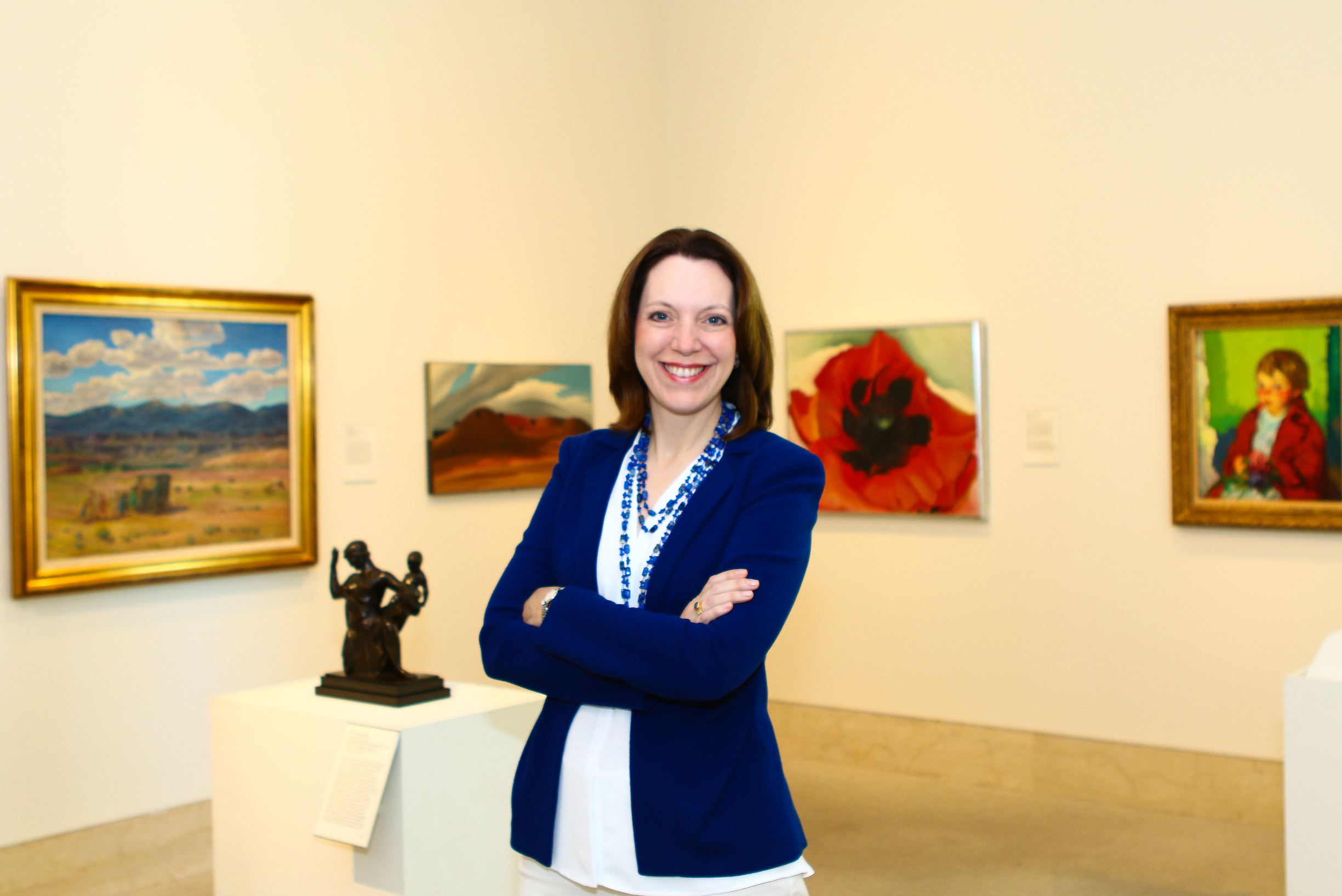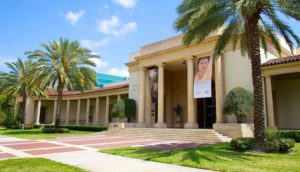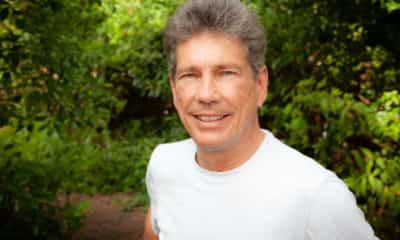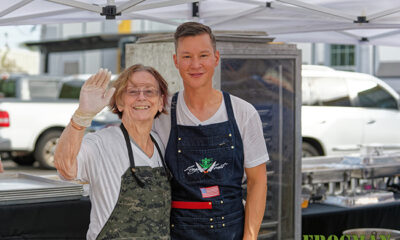Create
Kristen Shepherd is crafting a Museum of Fine Arts for the 21st Century

The arrival of Kristen A. Shepherd in 2016 was exactly what the St. Petersburg Museum of Fine Arts needed, in order to compete and thrive in today’s evolving arts universe.
The museum was 51 years old when Shepherd was brought in as executive director, and although tumbleweeds weren’t exactly blowing down Beach Drive, it retained a reputation as a relic from old St. Petersburg, your grandmother’s art museum.
The city had changed. A lot.
“What I presented to the search committee was: This place is awesome, but it’s asleep,” Shepherd recalls. “You’ve got to figure out how to shake the dust off.”
 As a comprehensive museum – meaning its collections aren’t limited to a single artist, medium, style or time period – the MFA is unique. “Methodically, strategically, let’s make sure this museum is prepared to be the most important museum in this area for the 21st century,” she’d said to the board of directors.
As a comprehensive museum – meaning its collections aren’t limited to a single artist, medium, style or time period – the MFA is unique. “Methodically, strategically, let’s make sure this museum is prepared to be the most important museum in this area for the 21st century,” she’d said to the board of directors.
“It’s the only comprehensive collection in Florida – how come nobody knows? Why are we so genteel and quiet about it? We do exhibitions nobody else can do. Let’s shout that from the rooftops.”
Two years into her tenure at the top, the first fruits of the Shepherd overhaul are beginning to show. Visitor numbers are up. The art world is talking. The recent exhibition of jewelry by Tiffany artist Jean Schlumberger was one of the most successful in MFA history, attracting interest – and paying customers – from around the world.
It’s a beautiful facility, in a prime location, and the permanent collections include works by Monet, Morisot, Corot, O’Keeffe, de Kooning, Whistler and many others; there is a glass gallery with works by modern masters, and a world-class photography collection, as well as ancient Greek and Roman, Egyptian, Asian, African, pre-Columbian and Native American art.
What was needed, she said, was energy, focus and an infusion of great, excited curatorial talent working hard to assemble more brilliant exhibitions. Much more community engagement. And an ambitious new approach to marketing.
It took a bit of juggling, a little here, a little there, but she’s thrilled with, and proud of, her current team. “There are a lot of moving parts in a museum,” Shepherd likes to say. “My job is the harmony – my job is to pull it all together.”
It’s exciting, she says, “to see this museum come into its own. But we’ve got a lot of work to do. There’s still a lot for us to do here. But we’re preparing to be the must-see place in this area.”
Shepherd was head of the Los Angeles County Museum of Art’s Audience Strategy and Services division when she was recruited for the MFA job, to succeed the retiring Kent Lydecker.
“So let me tell you about St. Petersburg,” the recruiter told her. “It’s near Tampa, it’s on the west coast of Florida …”
“I’ll just stop you there,” Shepherd told the woman.
She’d grown up in Clearwater, and had fond memories of the St. Petersburg Museum of Fine Arts, the first art museum she’d ever been in. In her high school days, she liked to sit in the garden there and read in peace. “My recollections of the place were probably romanticized – I remember, it was kind of dusty and sweet,’’ Shepherd says now.
“In the ‘80s, this was not a place most high school kids would have come. St. Petersburg was not even a place most kids would come.”
But Kristen Shepherd wasn’t most kids. She was deeply serious and analytical about everything. Her first passionate interests were astronomy and meteorology.
And she had other interests. Her mother, Judith, was general manager of Ruth Eckerd Hall. “Once, the Bolshoi Ballet was coming,” Shepherd says, “and I remember sitting in the audience; there was all kinds of security. And in my imagination, ‘ooh, they have to make sure that they don’t defect.’ Baryshnikov was a major star at the time. The idea of the Russians coming here, and cultural exchange, really fascinated me.”
Watching the performance, “I realized that language was not an impediment, that dance and music – that art form – was universal, and that culture was allowing a bridge between these counties where there’s a Cold War.
“As a pretty serious kid, I thought ‘Art is a way to connect people.’ International cultural exchange has a value in bringing peace and prosperity, and the big ideas of America.”
At George Washington University, she majored in international affairs, but it soon gave way to a burgeoning interest in art history. “It’s so multi-disciplinary in its nature,” Shepherd marvels. “You have to understand not just design, and the aesthetics and how beautiful art can be, but history, philosophy, music, material culture, politics. The context in which art is created is important, and a great art historian is a student of all of that.”
She received a BA, then a Master’s, in Art History from GWU. Her area of specialty is 19th Century British pre-Raphaelite art. “I’m a huge Anglophile,” she smiles. “British art is my jam. And pre-Raphaelite is so amazing. It’s a period in art that is so earnest and sincere – it’s poetic and it’s literary, and it’s radical in so many ways.”
Subsequent jobs at Sotheby’s, the Whitney Museum of American Art, and at LACMA, taught her about the various strategic elements of keeping an art museum running – and moving forward.
“I guess I’ve made a lot of decisions in my career based on what I could learn and who I’d be working with, rather than ‘Here’s the job I want in 15 years, and here are the right steps to take to get there,’” Shepherd explains.
“It’s been more about ‘What are the opportunities? What can I learn? Are these interesting people and do I believe in what they’re trying to do?’”
St. Pete’s Salvador Dali Museum, Shepherd feels, has done a remarkable job in marketing itself as a tourist destination. Its success is well-deserved. “People will go there first,” she says. “And then they’ll come to the MFA.
“Seventy-five percent of their attendance is tourists. Seventy-five percent of our attendance is locals. And I love that. That’s exactly where I want to be. I want this to be the community’s resource. The community’s museum. Our tourist audience is going to grow, and that’s great. But I want the people who live here to love this place.”
With an annual operating budget that varies between $4.5 and $5.5 million, the St. Petersburg Museum of Fine Arts is – like every other nonprofit arts organization – always in need of additional funding, sponsorship and investment support. Some things never change.
Still, the main challenge – the one that matters most to Kristen Shepherd – is ensuring that the museum remains vibrant, relevant, and a prized cultural asset to the residents of St. Petersburg and the bay area.
“My vision,” she says, “is to embrace the diversity of what we can do, the stories we’re able to tell that nobody else can tell. Let’s own that. And doing it at a very high standard levels this place up – ‘Now let’s be awesome. We are the anchor for a really robust arts community. Let’s shine a light and be awesome.’
“For us to have specialized museums in this area is fantastic. It makes us the natural complement to all of the other museums, galleries, artists, studios … everything that’s happening, this is the center of gravity for the arts. And we need to own that. We need to stand up straight and tall, and say ‘This is what we do here.’”







